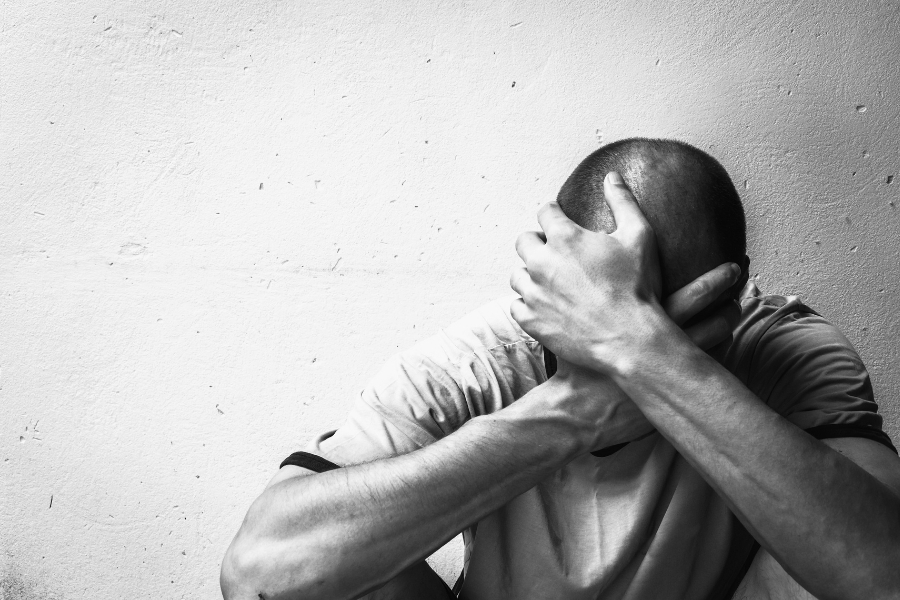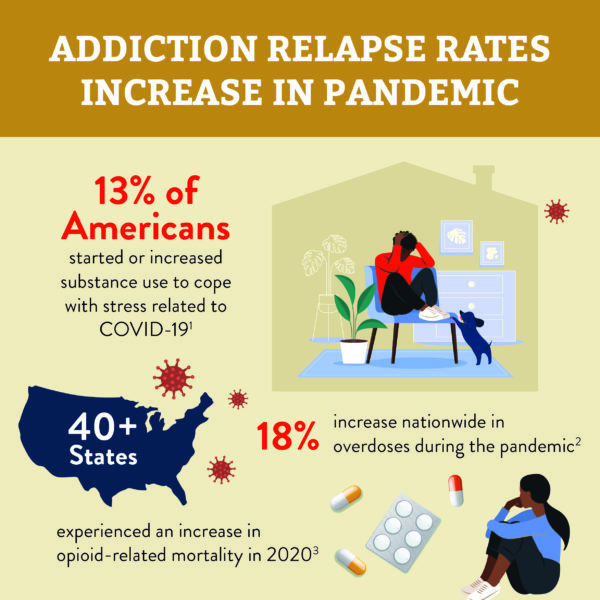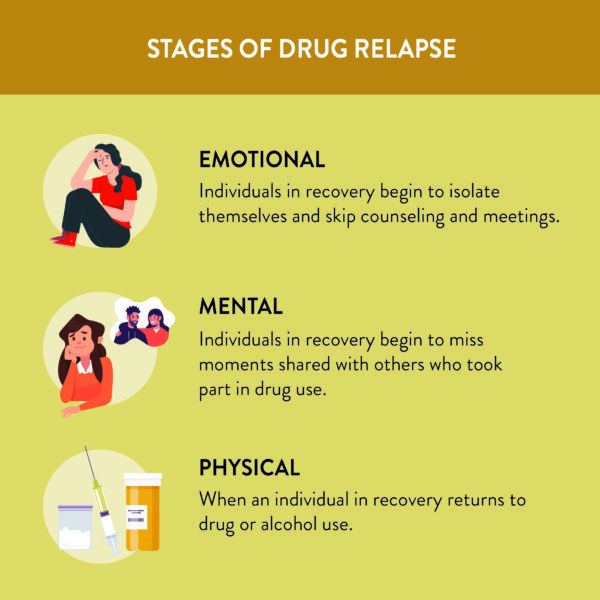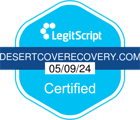As the COVID-19 pandemic began in the spring of 2020, stress and anxiety were two of the most common mental health challenges reported to psychologists. What was soon to be revealed from the medical and mental health community is that substance use disorder was also rising. A population strongly impacted by the pandemic includes those who are struggling with their sobriety. Addiction relapse rates are on the rise during periods of quarantine and increased stress.
As of June 2020, 13% of Americans reported starting or increasing substance use as a way of coping with stress or emotions related to COVID-19, according to the Centers for Disease Control and Prevention.1 The pandemic also brought an 18% increase nationwide in overdoses compared to the same months in 2019.2 In December 2020, the American Medical Association reported more than 40 states experiences an increase in opioid-related mortality along with continued concerns for those battling substance use disorder.3
Relapse vs. Lapse
Understanding the risk and harmful effects of an increase in addiction relapse rates begins with knowing the difference between relapse and lapse in addiction. Relapse is common for those battling substance use addiction as they first begin their journey to sobriety. A relapse occurs when a substance use disorder patient stops avoiding the use of a drug or alcohol and returns to previous use levels.
On the other hand, a lapse occurs when an individual takes a short break from avoiding a drug or alcohol and immediately returns to abstinence soon after. An example of a lapse would be if an individual has set a goal to stop drinking alcohol but has a cocktail at dinner with friends, then immediately returns to avoiding alcohol.
Continued after video:
Relapses are common for those on a journey to sobriety. Statistics show 70 to 90 percent of those seeking recovery from drugs or alcohol experience at least one mild to moderate slip.4 These numbers, although very high, represent those making a determined effort to stop their dependency on drugs in a socially active world. The pandemic created a space where individuals were forced into isolation. Many could not begin or continue their individual or group counseling that often accompanies an intensive outpatient program.
Why Does Relapse Happen?
Those who struggle with substance use disorder most commonly experience a relapse when triggered by a drug-related cue, like a particular place or seeing drug paraphernalia. One of the most notable advantages of utilizing a Scottsdale, AZ outpatient program is that the patient builds healthy coping skills while still participating in daily activities, like work and time with friends and family. An outpatient program builds coping and life skills necessary to avoid drug-related cues.
The first 90 days in recovery are statistically the most likely time period for a relapse to occur.5 When you partner the difficulty of those three months with the stress poured on during the pandemic, it’s no surprise experts saw addiction relapse rates increase. So much of creating a life of sobriety involves making new friends, exploring new activities, and attending meetings or counseling. During the pandemic, none of these things were possible. And unfortunately, this lasted for more than a year. The isolation left many substance use disorder patients reaching for a familiar fix to intense emotional and mental challenges. A few of the most common triggers into relapse include:
- Returning to a particular place or seeing a person associated with drug use.
- Pre-existing emotional or mental health challenges.
- Circumstances that trigger drug or alcohol use, like financial struggles, social pressures, an abusive or toxic relationship, and others.
Arizona Addiction Relapse Rates
Arizona residents were particularly susceptible to the difficulties presented by the pandemic. In August 2020, the Arizona Department of Health Services reported an increase in deaths due to suicide and drug overdose during the pandemic.6 Experts say loneliness is one of the top drivers of relapse. As so many continue to battle the effects of the pandemic, family members and friends can support a loved one struggling with substance use disorder by understanding the phases of relapse and recognizing the warning signs of each.
Stages of Drug Relapse:
- Emotional relapse: When individuals in recovery begin to isolate themselves (or are isolated by a natural occurrence, like the pandemic) and skip counseling sessions or group meetings. The individual may be feeling sadness from not taking part in drug or alcohol use.
- Mental relapse: When an individual in recovery begins to miss the moments shared with others who took part in drug use. They may claim that they are fine to hang out with the same friends or in the same places that were a part of an unhealthy lifestyle.
- Physical relapse: When an individual in recovery returns to drug or alcohol use.
Avoid Addiction Relapse
Desert Cove Recovery is the top outpatient program in Arizona. For those battling addiction relapse during the pandemic or wanting information for a loved one, the experienced drug experts and counselors at Desert Cove Recovery are ready to help you create a personalized plan for recovery.
Sources:
[1] https://www.cdc.gov/mmwr/volumes/69/wr/mm6932a1.htm [2] http://www.odmap.org/#spike [3] https://www.ama-assn.org/system/files/2020-12/issue-brief-increases-in-opioid-related-overdose.pdf [4] https://www.psychologytoday.com/us/blog/where-science-meets-the-steps/201210/why-relapse-isnt-sign-failure [5] https://www.psychologytoday.com/us/basics/relapse [6] https://cronkitenews.azpbs.org/2020/08/11/health-officials-report-increases-in-drug-overdoses-suicides-during-covid-19-pandemic/








